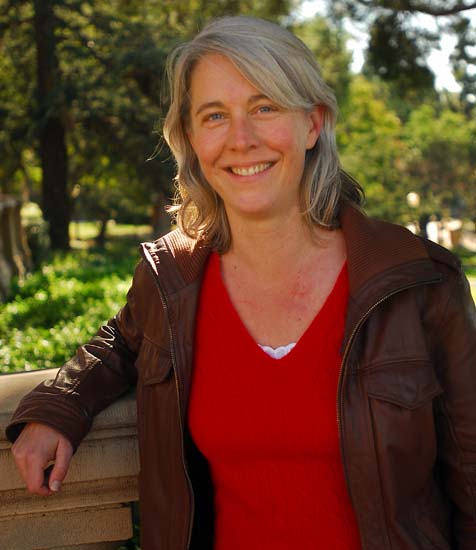For most undergraduates, the path to UCLA is an application followed by an acceptance letter received while still in high school.
For other, nontraditional students, life sometimes happens first.
In her 41 years, Kaya Norgaard’s life has brought her from Copenhagen, Denmark, to Brazil and back, and now to UCLA.
After spending time working at many jobs, including a cook’s assistant and then as a kindergarten teacher’s assistant, Norgaard enrolled in the University of Copenhagen to study Portuguese after she grew frustrated with a series of unfavorable jobs.
“(One day) I couldn’t stand it anymore,” she said. “I was fed up with my situation. That frustration grew to be unbearable.”
Through the University of California’s Education Abroad Program, she enrolled at UCLA in the fall quarter as a reciprocity student, in which one UCLA student traveled to Copenhagen as she came to UCLA.
Nontraditional students are considered students over the age of 25, often with gaps in their education during which they took time off for various reasons.
In Copenhagen, Norgaard wasn’t always the oldest person in her classes.
“It’s not that unusual that people come back (to school),” she said. “That’s the whole culture. It’s totally different.”
At UCLA, she finds that she is often the oldest student in her classes, although she said she has seen one person who might be older.
She attributes the difference to a public university system, in which fees are paid for by tax dollars.
“If I were to pay for tuition in Copenhagen, I wouldn’t be able to do it,” she said. “When I was 18, I didn’t have parents who could pay for (college), and I still don’t.”
She has noticed differences in both the academic and social aspects of campus life between the two universities.
A bachelor’s degree in Copenhagen usually takes three years to obtain, she said, because there are no general education requirements. For this reason, students are expected to have a stronger academic background before entering the university, she said.
“I think the American way is more inclusive,” Norgaard said. “Everyone has a chance. If you don’t have that (background) in Copenhagen, you could easily get left behind.”
Norgaard said her Portuguese language program in Copenhagen went from basic language acquisition to medieval texts in one term.
“It’s what you would call an intensive language program,” she said.
She also said that there is no real campus in Copenhagen. The buildings are scattered throughout the city, whereas the UCLA campus is more central.
Through her reciprocity program, Norgaard does not pay fees to the UC for the year that she attends classes, but does not receive a degree from it either. Instead, she receives credit through the University of Copenhagen toward graduation.
She ultimately returned to the University of Copenhagen to study Portuguese and is engaged in Latin American studies at UCLA because of her experiences in Brazil.
In high school, she studied abroad for the first time in the South American country at the age of 16.
“The time I’ve spent (in Latin America) has opened a lot of questions,” the third-year Latin American studies student said in her Danish accent. “I guess the curiosity came from there.”
After completing school, Norgaard went to work in various odd jobs until she was 23, when she returned to Brazil on a long vacation of seven months.
“I’ve met so many great people,” she said. “I love Brazilian music and culture, the language and people. I’ve always felt so welcome.”
Nontraditional students experience many of the same difficulties traditional undergraduates face, but there are some unique to their experience.
Vanessa Luke, a counselor at the Bruin Resource Center, said that although the center does not target returning students directly, the range of services offered often appeals to students with gaps in their education.
Every quarter, Luke holds a mixer for nontraditional students and transfer students, respectively, to help them build a sense of community in their new educational environment.
Norgaard said she has taken advantage of the tutoring available.
“I decided I’d use those resources before I get all stressed out,” she said. “We don’t have that much in Copenhagen. It’s very nice if you know how to make use of it.”
And while Norgaard said it is easy to be left behind in Copenhagen’s university system, Norgaard finds herself actively pursuing different experiences at UCLA.
“I try to at least do things that are relevant and fun,” she said. “There’s so many possibilities, which I appreciate a lot. I have to make the most of it while I’m here.”
Norgaard’s maternal grandparents attended and probably met at UCLA in the 1930s, although she said that did not factor in to her decision to study abroad.
“It’s just funny,” she said. “Sometimes I wish my grandmother could tell me those stories about how they met.”
Her experience as a student returning to school will only help her with what is to come in life, she said.
“I’ll be heartbroken when I leave here,” she said. “I’m definitely passionate about what I do. If I ever have to go back to being a maid, then at least I can be grateful to myself for getting a degree. It’s something I’ve always wanted to do.”
Norgaard remains unsure of what will come. She is considering graduate work back at the University of Copenhagen or finding an internship in Brazil.
“I’m not afraid of what’s to come,” she said. “I’m not afraid of not accomplishing what I want. You never know what life is going to bring you.”
